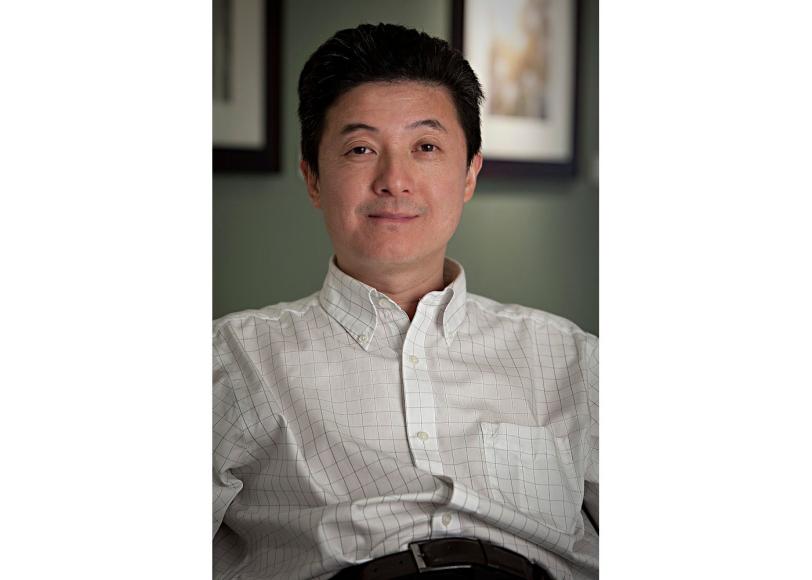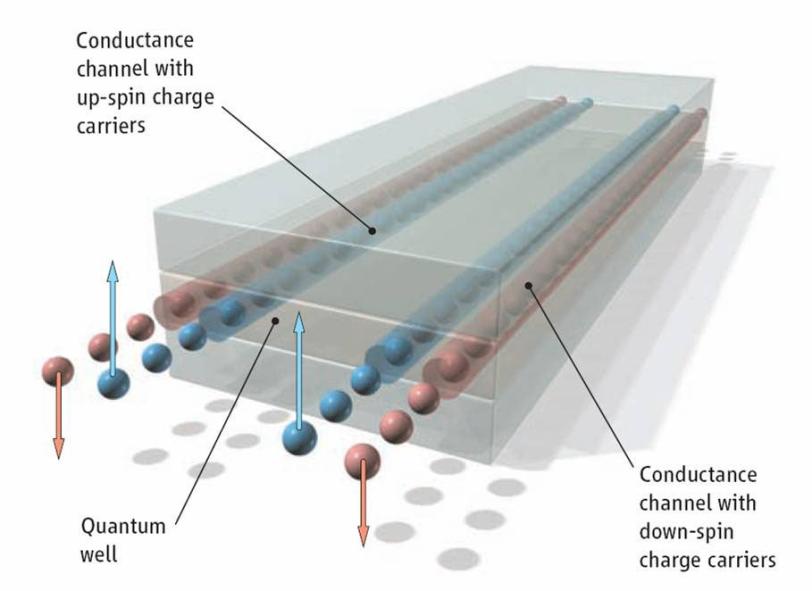Shoucheng Zhang, Stanford Physicist and SIMES Scientist, Honored by American Physical Society
Shoucheng Zhang, Stanford Physicist and SIMES Scientist, Honored by American Physical Society
By Glennda Chiu
Shoucheng Zhang, Stanford Physicist and SIMES Scientist, Honored by American Physical Society
Shoucheng Zhang of SLAC and Stanford, and two other researchers, have been awarded the 2012 Oliver E. Buckley Prize in Condensed Matter Physics for their prediction and discovery of topological insulators, a new phase of matter with the potential to revolutionize electronics.
The $10,000 prize, given by the American Physical Society (APS), honors Zhang, a theorist with the Stanford Institute of Materials and Energy Sciences (SIMES); Charles L. Kane of the University of Pennsylvania; and Laurens W. Molenkamp of the University of Wüerzburg in Germany.
It was Zhang and Kane who suggested in 2005 that certain materials might exhibit something called the quantum spin Hall effect: They would carry electrical current in well-defined channels along their edges, and nowhere else. What’s more, electrons with opposite spins would move in separate channels and in opposite directions, a harmonious arrangement that allows the electrons to flow smoothly, without dissipating heat.
This is important because heat buildup is a big obstacle to cramming more and more transistors onto conventional computer chips. Researchers also think these materials could be useful in spintronics, which would use the spins of electrons, rather than their charges, to carry current, as well as for studying exotic phenomena such as axions and magnetic monopoles.
In 2006, Zhang and his colleagues predicted that mercury telluride could function as a topological insulator. Less than a year later, Molenkamp’s team showed that samples of mercury telluride did conduct electricity in this remarkable way, although only at very low temperatures. Then in 2009, Zhang’s team predicted that another material, bismuth telluride, could be a topological insulator at room temperature. This, too, proved true.
Later, studies by groups at Stanford and Princeton showed that 3-D materials can also be topological insulators – in this case carrying currents only on their surfaces – and that these currents could be controlled by toggling a switch.
“The fact that the APS gave out this award so quickly, just a few years after this research burst upon the scene, is a real endorsement of the impact it has had,” said Tom Devereaux, acting director of SIMES, which is a joint institute of SLAC and Stanford.
This is the second year in a row that a SIMES researcher has won the Buckley Prize. Last year it was awarded to SLAC Chief Scientist Zhi-Xun Shen, then director of SIMES, for innovations in technology that advanced the understanding of high-temperature superconductors – materials that conduct electricity with 100 percent efficiency – and similar electronic systems. Shen has also collaborated with Zhang on a number of studies, including work involving topological insulators.
“We at SIMES are really proud of the fact that Shoucheng got this award, and also that Z-X got the award last year,” Devereaux said. “The Buckley Prize is one of the biggest prizes in our community, and back-to-back awards are really rare.“
Shen said he, too, was delighted to hear that Zhang had won the Buckley Prize. “His theoretical insight on this issue has stimulated a lot of work, a lot of experiments,” Shen said. “As a scientist he can be characterized as someone bubbling with new and creative ideas. Even for an existing problem, he often comes with a fresh and new way to look at it.”
For his part, Zhang said, “I’m truly humbled by this prize and the recognition by my colleagues.” He added that it has always been a dream of humanity to design new materials and predict their functionality, and “this is one success story that shows it’s possible.”


(Image courtesy Shoucheng Zhang)